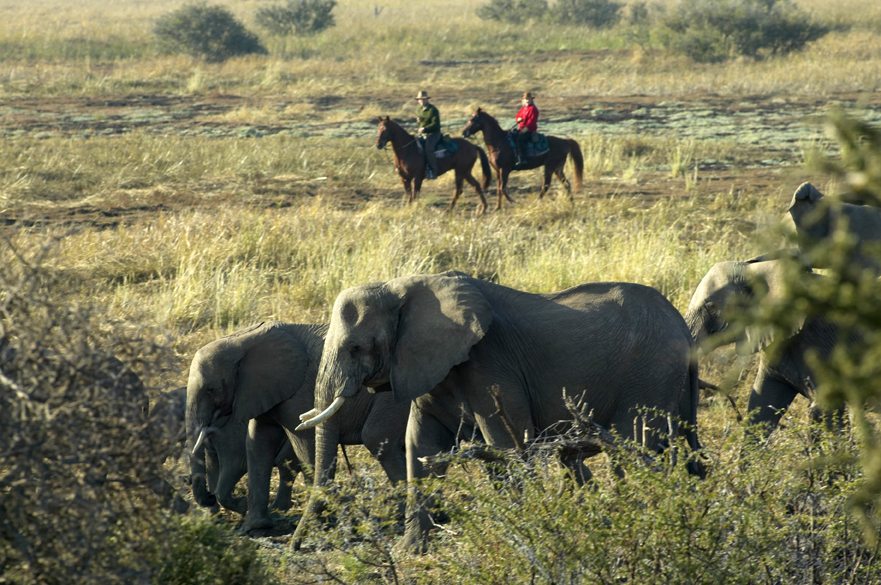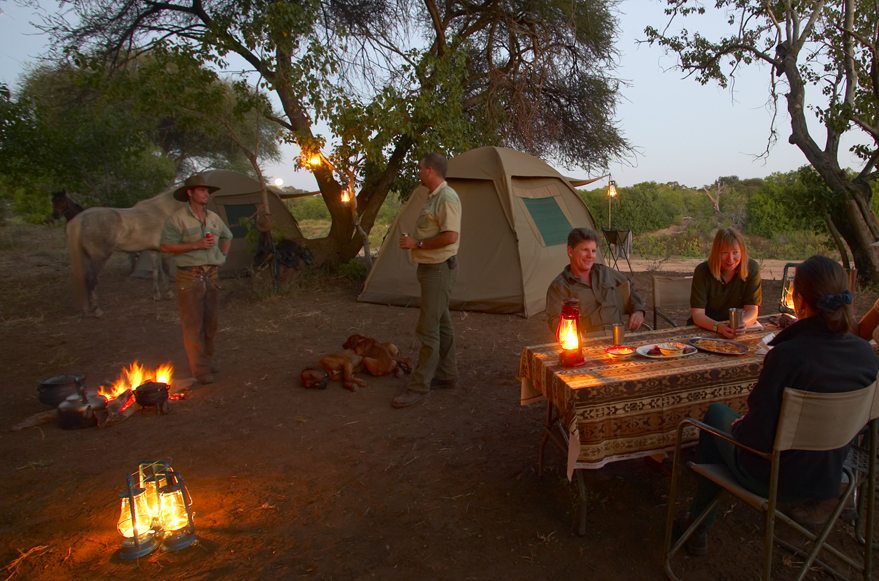After the first night in the comfortable bungalows of the Tuli Safari headquarters — an oasis of green gardens and an airy, immaculately kept stable, all surrounded by elephant-proof fencing – we headed off on safari. Safari is the Swahili word for journey, and in my book you’re not really on safari unless you are out in the bush all day and sleeping in tents at night, with the sounds and smells of Africa all around you. There is nothing quite like it, not anywhere in the world.
The Tuli is dominated by elephant, and there is sign everywhere: tree stripped of bark, trees toppled over, dung piles and oval tracks in the dust. We saw them often, lone young bulls, matriarch herds with calves. Mostly they were unperturbed by our presence, but we rode closer to some groups than to others. Our guides and our horses had a sense of the herd’s comfort zone, which I trusted implicitly. In fact, I always assume my horse knows a whole lot more about the African bush than I do.
The presence of so many elephant is inspiring, but in fact the population is exceeding the land’s carrying capacity and they should be expanding across the Limpopo River into South Africa and east into Zimbabwe. The outfitters and managers of the game reserve are actively working with the governments of Botswana and South Africa to create a trans-frontier park and thereby restore the elephants’ ancient migratory patterns. Expanding across the border into Zimbabwe is part of the long term plan, on hold until the political and economic quagmire stabilizes.
The Tuli Block of Botswana is a fascinating place not only from an ecological perspective, but from an historic one as well. The Zeederberg Trail, the major supply route between Bulawayo and Johannesburg during the Boer War, runs through the Tuli. In fact, our route followed the Zeederberg for much of one day, and our camp one night was under immense mashatu trees marking a stage stop. On occasion we saw evidence of long-deserted farms along the river courses, a testament to the clever President of Botswana’s policy allowing British settlers along the Limpopo River as a buffer against the encroaching Afrikaaner Voortrekkers. Seemingly in the middle of nowhere one afternoon we came across crumbling brick foundations, and our guide captivated us with the story of a daring Boer raid on the British cavalry’s supply store.
We rode for about 5 hours each day, arriving into camp in time for a late lunch. Theoretically there was time for a nap, but we generally spent the afternoons trying our hand at cracking the bullwhip, or writing in our journals and talking. Towards evening when the shadows lengthened, we went out for either a game drive, or a walking safari led by our guides. The game drives in an open landrover allowed us to see wildlife (especially the nocturnal species) that we might have missed otherwise, and the walking safaris invariably turned up interesting bits of historic or botanical information.
Ellen



